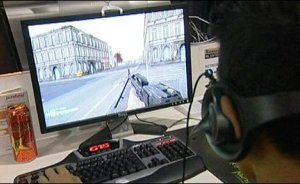Being slow is tiresome, especially if the car you use is built to be the opposite. The reasoning for falling short of your desired lap times is often more subtle than you think. However, maybe it’s not down to your mistakes or the perfection of others. Maybe it comes down to how you use assists in F1 22.
In the months since release, people have grown accustomed to racing an F1 22. The handling of the new generation of cars, alongside some minor changes to tyres, have brought upon some innovation in regards to driving. But still, one of the most important things to understand in order to be fast are the driving assists and how to properly use them. Let’s start with our first tip.
Tip #1: Braking Assist
Needless to say, almost, but driving with braking and steering assist enabled will absolutely kill your lap times. The braking assists, depending on the severity you put in, will help you slow your car automatically while entering a corner or a slower passage of the track. And the steering assist basically helps you stay on the racing line at all times. It’s almost as if somebody is standing behind you and turning the wheel and stepping on the brakes for you.
As I said, for most this has maybe never even been enabled completely. But if you are amongst those who use these too, you should really consider turning them off the next time you hit the track. Not only does it implement a sort of AI mindset in your brain, but it also slows you down significantly. There is no way around turning the tide and trying to handle the car for yourself. There is an assist which can be very helpful for that.
Tip #2: Racing Line
For our number two, I may take an unpopular stance, to be honest, I like the racing line in F1 22. I think it is dynamic and doesn’t always cover the entirety of the track. I think the problem lies more in the behaviour of the players who are too used to it. All tracks on the F1 calendar are cool in their own way. Well, almost every track I guess. But they are also challenging to master. For some of us less ambitious racers learning the entry and exit reference points to every corner can be a Herculean task. That’s why the racing line comes in handy. It provides a rough outline of where you can place your ride in order to be safe and also leave suggestions for when you should start breaking.
The problem starts when people are too used to driving with a racing line enabled. You see, what I often see in races is that the drivers who are used to the green, yellow and red will have a harder time moving off and taking a different approach when battling in frequent cases, this can lead to crashes and frustration. Of course, my advice would therefore be to only use the racing line in solo practice modes and qualifying if you really feel like you need to.
Also, the corners only option is really cool because it is basically the only place where the racing line really matters. In the end, you hopefully memorise a lot of the braking points and just access them through muscle memory. In the race, of course, one thing will be missing and that is your knowledge of reference points. Thankfully, in most cases F1 tracks half the metre boards. Once you feel comfortable, you can try to focus on them as well in solo practice. This way, you’re not caught with your pants down when it comes to the race.
Tip #3: Manual Shifting
For a number three, I want to start with a personal story of mine. When I started playing the F1 games, I hated manual shifting. I was still on a game pad and felt as if I would much rather focus on my driving than constantly fiddle around with my trigger buttons. But over time I forced myself to learn it and later switched to a wheel setup. The difference is unbelievable. Automatic shifting in F1 games is often set up to give you the full range of a gear, meaning it drives until the seemingly optimal point for an upshift or downshift is reached. In reality, these aren’t optimal whatsoever. If you control upshift or downshift, you will be able to go quicker. Plus, the feeling for the car will increase massively in terms of techniques you can use to learn manual shifting quicker. There are some like keeping an eye on the rev lights of the HUD or steering wheel.
I personally find that to be a little distracting from the racing action and especially in high speed passages, there is always the risk to crash when multitasking like this. I would rather suggest you use your feeling once you’ve developed it. The engine’s sound can be a very good indicator for up shifting, and that is usually easier than downshifting. If you hear the engine rev up to a loud point, it is probably right to shift up. For Downshifts, there are two problems. You will do them in quick succession and you won’t have the engine sound to guide you through it.
Here, there is only the option to practice. Go around a track and if you feel like some corners are giving you a hard time, you can study some tape, for example, or try different variants of a driving style. The only real piece of advice I can give you for downshifting is that you should start counting gears rather than relying on the HUD for information. This way you can focus more on your driving and don’t have the aforementioned problem of yielding while multitasking.
Tip #4: ABS Brakes
4: After you are done with learning how to shift manually, you can focus on number four. F1 Cars usually don’t come with ABS drivers. In the real world, cars can modulate brake pressure very precisely. In F1 games, this is different. However, ABS is an option that can be enabled and has the purpose to keep your wheels from locking up while braking in turn. However, it takes you a lot longer to slow down the car and thus you lose some time. That is why I would advise you to take a step by step approach to eradicate ABS from your races.
The main problem ABS tackles is lock-ups. These happen most often in low to mid speed corners when you apply too much force on the brakes. This is especially true for tracks with elevation changes such as Interlagos or Circuit of the Americas. I would advise you to get on a few high speed tracks like Monza or Jetta first to get a feeling for driving without this assist. Just like with a lot of our list, the feeling side of it is most important.
Once you get a grip for racing with it, you are just a few steps away from nailing even the most difficult corners. Feeling how much brake you can apply before the lock-up is most important. Think about how fast you are and then modulate the braking from there. With the right amount of practice, you will be cruising your way to more consistent lap times as driving without ABS will allow you to get your car slowed down much quicker than before.
Tip #5: Traction Control
Lastly, I want to talk about traction control for number five and it is kind of a double-edged sword. TSI is an assist used to help with grip when accelerating a car with traction control enabled will be able to apply much more throttle while remaining stable. The downside is that you aren’t getting away as quick as without the assist and thus your sector times will shimmer in yellow more often than not. But what’s the problem then? Can’t you just disable it? Well, in my eyes, TSI is probably the hardest assist to turn off.
You see, F1 cars generate an insane amount of power which gets channeled towards the high end wheels when exiting a corner. Driving without TSI can therefore be extremely tough for anyone who is not used to it. There are some techniques which can help you mitigate some of the problems. However, short shifting is one of those. If you gear up quick, you will keep the rev range at a low level and thus minimize wheelspin. You will give up acceleration in the process, but at least you stay on track.
The problem is that if you continuously short shift you are back to square one. You want to be quicker by disabling TSI and have to force yourself to be slower at corner exit by short shifting you still might be faster, but especially at the start you won’t see a difference. Doesn’t really make sense, right? I think this is a give and take to be honest. But if you are able to find your groove without TSI, it is a potent way to get even quicker. Be assured if you want to compete with a fast driver’s online, you will need to get used to driving without traction control. And there we have it.


